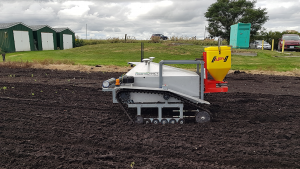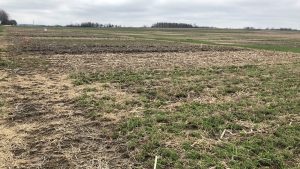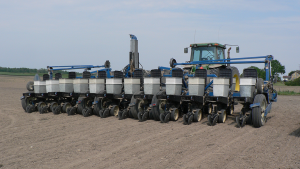Filling the gap
TECH START-UP ANALYSING AG DATA

A NEW HAMILTON-based tech start-up aims to help farmers fill the gap between collected data and performance in the field by providing solid analysis of that data.
Realizing there was very little data analysis being done in the field of agriculture, plant scientist Mahla Mirali founded Grain Data Solutions and joined forces with data analyst and now CEO Salman Razavi. Their aim is to develop prediction models and help farmers capitalize on captured data.
“What we noticed was that there is a gap between the amount of data that’s getting collected these days and how much data is getting analysed,” said Razavi.
On a high level, what Grain Data Solutions does is digest data collected on-farm, including soil moisture, yield, and biomass, and combine it with satellite data, weather data, and data from remote sensing. Putting them together, they try to make sense out of everything using advanced analytic techniques.
“Farmers do that through experience and intuition,” said Razavi. “But the problem is that when you have so much data, which is the story these days, there is a cap on the human brain and how much you can analyse.”
“Computers can handle way more data than we can,” he added.
Grain Data Solutions uses collected data to make predictions and to spot trends. Once collected, data is fed into a machine-learning algorithm where it is analysed. The aim is to help farmers save costs, forecast disease and pest outbreaks, and ultimately, to improve yields.
“For the farmers I’m talking to, the most important thing is yield, and yield is affected by many factors,” he said, pointing to disease and insect pressure.
Currently, Grain Data Solutions is also working with the University of Alberta to analyse five years of soil samples alongside satellite data to better understand changes in the soil in terms of soil organic matter and nitrogen levels.
In statistics, exploratory data analysis is an approach of analyzing data sets to find correlations of statistical significance. It could be, for instance, how nitrogen applications impact yield, said Razavi.
FARMER INPUT
Grain Data Solutions is also working closely with farmers on several projects. Razavi asked farmers what matters most to them in terms of what they can learn from their data. Many expressed concerns about nitrogen use and soil organic carbon, he said. Knowing what influences soil carbon sequestration, for instance, would allow farmers to take advantage of the developing carbon market.
While many farmers have adopted ‘regenerative’ practices, they are frustrated that they are not being compensated for the results of those practices, he said. They are also frustrated that they had no say in the development of protocols within the carbon market. In order to do that, though, they would need to be able to show the amount of carbon they have sequestered over the years. Razavi is working on a model to do just that. Ultimately, he hopes the work they do will help farmers capitalise on those changes.
“If you want to benefit, you must be able to prove it,” said Razavi. “And it’s not easy for farmers. That’s why we target this project.”
Jeff Barlow, a grain farmer near Hamilton and director for Grain Farmers of Ontario’s District 6 (Haldimand, Brant, Hamilton, Niagara), is one of the farmers participating in a Grain Data Solutions project.
Razavi has taken some of the data Barlow has collected on the field and mapping nitrogen and carbon in the soil using satellite images. While he has not yet received feedback from the project, Barlow is intrigued by the possibilities. He hopes it will help him maximize inputs, which would reduce costs and boost yields. It would also help him reduce his environmental footprint by minimizing nitrogen emissions and increasing soil carbon sequestration. Further down the road, he hopes that having access to this type of data will help him get paid for the carbon his soil sequesters. More importantly, though, Barlow hopes the data will be used to inform policymakers before they push for regulations.
Grain Data Solutions is still working on it, and they have made great progress using data collected by universities and other non-profit organizations over the years. Using this data has its drawbacks, though, the main one being that it is not scalable, said Razavi.
If successful, having the ability to accurately map nitrogen use and quantify soil carbon sequestration will be a game changer for Canada’s grain farmers.
“We have proof of concept, but the product is not there yet,” he said. •











